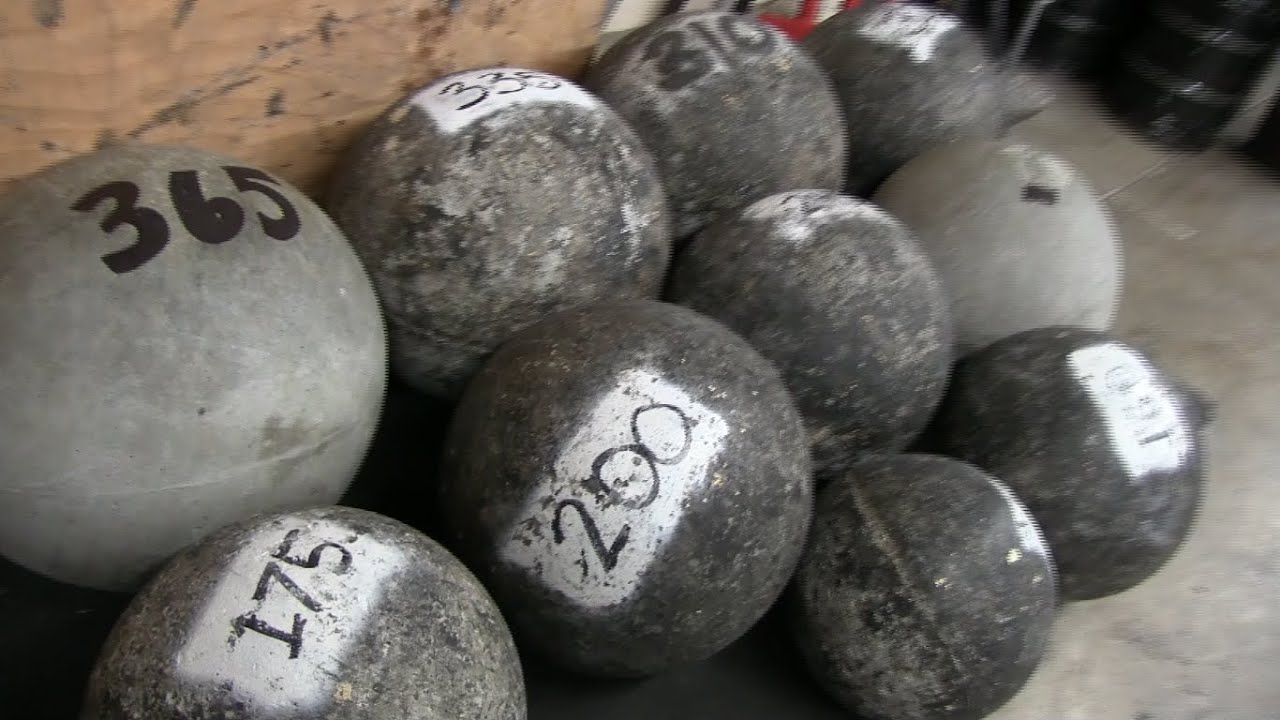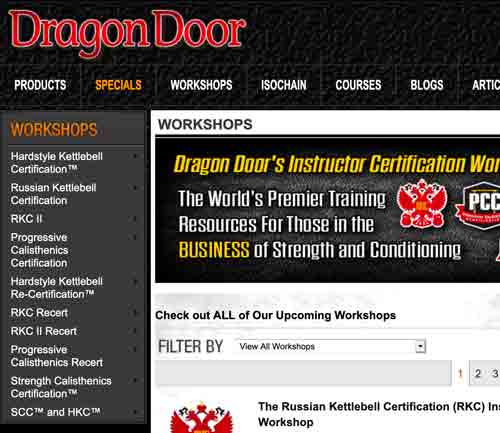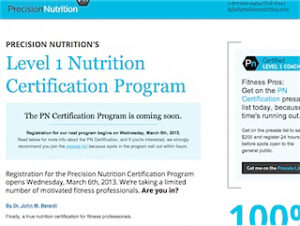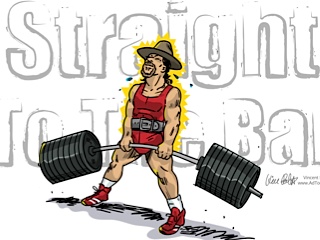
This month’s collaboration with Run to Win‘s Blaine Moore – Things which deserve more attention – continues with a look at one of my favourite areas of training, the forearms.
Whether you’re after some extra mass, iron bar strength or the pumped, veiny look that Ronnie Coleman has been showing off for years; forearm training deserves to be taken seriously. This article looks at several ways to do just that.
The primary movements
The muscles of the forearms control several movements of the wrists and elbows, and the relevant exercises all move the hands or bend the arms in some way.
For the sake of simplicity, there are four primary movements to consider. Once you know what they are, it’s a fairly simple matter to add weight and repeat the action. They are :
lift your hand straight back (bending at the wrist) : imagine performing push-ups, and think about the position your hands are in relative to your forearms.
press your hand directly forward (bending at the wrist) : the opposite of the above movement. Push-ups on the backs of your hands.
rotate your hands (with hands at 90deg to the wrists) : think of push-ups again, and point your fingers out to the sides; without moving your forearms. Now point them in towards each other (again without moving your forearms).
hammer : imagine hammering a nail, drinking a beer or shaking hands with someone. The arm bends at the elbow, and the hand (held vertically) bends at the wrist.
Exercises
As I mentioned above, the exercises are really only repeating the actions; with an increased level of resistance. A few ideas :
Wrist curls : these can be supported (table-top or preacher bench) or unsupported (seated or standing), using a dumbbell, barbell weight plate or any other heavy object you can hold in one hand. To perform, turn your hand so it’s on its back (palm to the sky), grab your chosen object and – bending only at the wrist – lift it skyward as far as you can. As you’ll quickly see, the range of motion is a tiny one (a couple of inches or less).
For a reverse wrist curl, simply turn your hand over (palm toward the ground) and perform as above. Once again, the ROM is only a couple of inches or less.
Wrist roller : one of the simplest pieces of equipment you can make for your home or commercial gym is a wrist roller. This consists of nothing more complex than a section of pipe/baseball bat/length of turned wood (I use an axe handle – without the head, of course) and a chain or cord to hold something heavy. Attach a plate or two, hold the handle at arm’s length (in your best zombie pose) and roll it up as if it were a newspaper.
Using one in a commercial gym :
Also worth a look : a DIY Axle-mounted wrist roller on IronOnline

Thor’s Hammer : once again, simplicity is the name of the game when it comes to forearm training. Take the collar and plates off one end of a dumbbell (leaving a couple on the other end). After making sure the other collar’s on tight (long story), pick it up via the empty end and wave it around as if you’re conducting an orchestra. Make sure you get a few side-to-side rotational movements in there.
Chair lift : yes, I realise that the term ‘chair lift‘ means several different things, but in this case I’m just talking about picking up a chair. Squat down and grab it by one of the front legs (near the base, if you can) and stand up with it. To make this more difficult you can either slide your hand a little further toward the ground, or increase the weight of the chair.
NB : This is far more difficult than it sounds.
Zottman Curls : I love these, and once you see the forearms belonging to the exercise’s creator; you’ll understand why. Pick up a dumbbell (fairly modest weight) and begin to perform a bicep curl. When you reach the top (the dumbbell is next to your shoulder), rotate the dumbbell 180 degrees and gradually straighten your arm. On reaching the bottom (arm straight), rotate the dumbbell 180 degrees again and return to the top.
Rinse and repeat. Try to keep the movement smooth.
NB : your forearms will thank you even more if you keep your hand tilted back slightly through the movement.
Thick bar [insert your favourite exercise here] : for almost any exercise, using a slightly thicker bar (somewhere around 2.5″) will increase the forearm involvement. You can either purchase the thicker bars, fatten up the ones you have or use dedicated grippers to instantly thicken up any bar you use.
Rolling Thunder : This is a superbly simple idea, and an extremely challenging one. Your chosen weight is suspended from a rotating handle, providing an extra dose of fun in any exercise. Love it.
Kettlebell work : one of the great side benefits of kettlebell training is a greater level of forearm work than dumbbell equivalents (for nearly every exercise). The two main reasons for this are :
- kettlebells have a thick, curved handle which is more difficult to hold than many dumbbells of the same weight
- the weight is sometimes (this depends on brand) off-centre, increasing the difficulty. If you’re using one that doesn’t have the weight unevenly distributed, simply grab the handle to one side.
Sandbags, kegs and many other unusually shaped objects : as a general rule, if the object is more difficult to pick up, it’ll require a greater level of wrist strength (and therefore forearm work). Pick up a barbell with a fairly light weight, and then go outside and pick up a large stone, of a similar weight. You’ll see what I mean.
Levering : the king of forearm training has to be sledgehammer work. Once you pick up a sledgehammer by the end away from the weight, you’ll see why. Almost anything you do with it is going to be challenging.
The undisputed master of sledgehammer training is Slim ‘the Hammerman‘ Farman. Although there’s an element of showmanship in some of the levering stunts he performs on stage, there’s an incredible amount of strength to go with it.
If you’re keen to try out a bit of sledgehammer training yourself, here are a few excellent resources on the subject :
- Sledhammer ideas (Tom Black)
- Eric Sledge’s Bending and Levering (Eric Godfrey)
- GripFAQ (Scott Styles)
- Combat grip
NB : Clubbells offer many of the same benefits. Similar idea.
Oh, and there’s always this approach :
Much, much harder than it looks.
Things to consider
Once you begin to include a bit of targeted forearm training in your routines, you’ll become acutely aware of the level of wrist involvement in other exercises. If you decide to try a few sets of wrist curls just before you begin the bench press climb, your bench won’t feel quite as strong. This isn’t necessarily a problem, but it is something to be aware of.
At some point in your workouts, your wrists will become sore. This is not the time to bravely power on; treat it the same as shoulder or elbow pain. Mild discomfort is to be expected – a sharp pain is not. Use your judgement.
Conclusion
I love forearm training, and throw it in to my workouts wherever possible. On some days (once or twice per week) this involves direct methods such as wrist curls and Thor’s Hammers; on the other days it is in the form of thick bar, kettlebell or sandbag training.
The benefits are enormous – not only in the form of stronger, more massive forearms; but also in the pressure it takes off many exercises. There are always PRs to break.











0 Comments